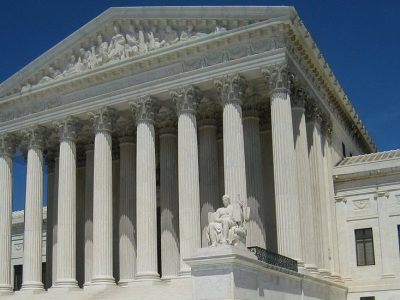Hey there, folks. So, we’ve got some pretty significant stuff brewing at the Supreme Court that could reshape environmental law and climate policy as we know it. The big question on the table? Whether the Chevron doctrine, a cornerstone of administrative law, might be on its way out. And with a conservative super-majority currently in place, the stakes are high. We’re expecting to hear their decision by the end of next month, so let’s keep our ears to the ground.
The Chevron Doctrine: A Legal Odyssey
Let’s take a stroll down memory lane to see how we got to where we are today. The Supreme Court’s dance with the Chevron doctrine has been a long and winding road, stretching back over 80 years. Here’s the lowdown on this epic legal journey.
1944: The Genesis of Judicial Deference
Our story begins with Skidmore v. Swift & Co. Picture this: the Supreme Court decides that an agency’s decisions are not just bureaucratic paperwork. They’re a “body of experience and informed judgment” that courts and folks like you and me can turn to for guidance. But here’s the kicker: the level of deference given to an agency’s interpretation isn’t set in stone. It hinges on factors like the quality of their reasoning and consistency with past decisions. In other words, it’s all about persuasion, not control.
1945: Setting the Standard for Agency Regulations
Next up, we have Bowles v. Seminole Rock & Sand Co. The Court here is like, “Hey, if an agency’s take on its own regulations isn’t way off base or at odds with the regulation itself, we’re going to give it the thumbs up.”
The Bumpers Amendment: A Tug of War
Now, let’s talk about the Bumpers Amendment. It popped up in 1974, with the goal of cutting back on courts deferring to agencies on legal matters. The Senate was on board, but the Carter Administration? Not so much. And so, the amendment died in the House. It tried to make a comeback in 1982 but, spoiler alert, met the same fate.
Chevron Enters the Stage
Fast forward to 1984, and we hit a major plot twist with Chevron, USA v. NRDC. This is where the Chevron doctrine makes its grand entrance. The rule of thumb here is that if a statute is vague, courts should respect an agency’s reasonable interpretation. It’s like the Court handed agencies a “Get Out of Jail Free” card for ambiguous laws.
1997: Auer Steps into the Spotlight
Auer v. Robbins comes along and echoes the Seminole Rock sentiment. Justice Scalia, writing for a unanimous Court, is all, “If an agency’s reading of its own rule isn’t bonkers, we should go with it.”
2000: The Supreme Court Draws a Line
But wait, there’s more! In FDA v. Brown & Williamson Tobacco, the Supreme Court is like, “Hold up. If we’re dealing with a big-deal issue, we’re not just going to roll over and play dead with Chevron deference.”
2001: Chevron’s Reach Gets Defined
Then, in United States v. Mead Corp., the Court decides that Chevron deference isn’t a one-size-fits-all deal. It’s reserved for agency actions that pack the punch of law. Otherwise, it’s back to Skidmore deference.
2006: Auer Deference on a Tight Leash
Gonzales v. Oregon comes around, and the Court isn’t handing out Auer deference like candy. If a regulation is just parroting statutory language, the agency doesn’t get a free pass.
2009: The Flip-Flopping Agency Dilemma
Justice Thomas, in National Cable & Telecommunications v. Brand X, applies Chevron deference even when the agency can’t make up its mind. It’s like saying, “It’s cool, we all change our minds sometimes.”
2013: A Crack in the Chevron Armor
City of Arlington v. FCC brings us Justice Scalia saying, “Yep, Chevron’s got you covered—even on jurisdictional questions.” But Chief Justice Roberts and Justices Alito and Kennedy aren’t having it, showing the first real signs of dissent within the Court.
2020: Kisor v. Wilkie and the Auer Adjustment
Fast forward to Kisor v. Wilkie, and the Court’s like, “We’re not tossing Auer out, but let’s tighten it up a bit.” Justice Kagan lays down the law: deference is cool only after all other interpretive methods are exhausted, and it’s got to be based on the agency’s expert judgment. Chief Justice Roberts gives it the nod, and just like that, we’ve got a new rulebook.
2024: The Future of Chevron on the Line
Here we are in 2024, and the Supreme Court is sizing up Chevron in two cases: Relentless v. Dept. of Commerce and Loper Bright Enterprises v. Raimondo. It’s like the final round of a heavyweight fight, and the whole legal community is on the edge of its seat.
So, what’s next? We’re all waiting with bated breath to see if Chevron will stand the test of time or if we’re about to witness a seismic shift in the balance of power between the courts and administrative agencies. Stick around, because this is one legal saga you won’t want to miss.
Tagged: administrative agencies, administrative law, Chevron Doctrine, judicial deference, regulatory state, statutory interpretation, U.S. Supreme Court
